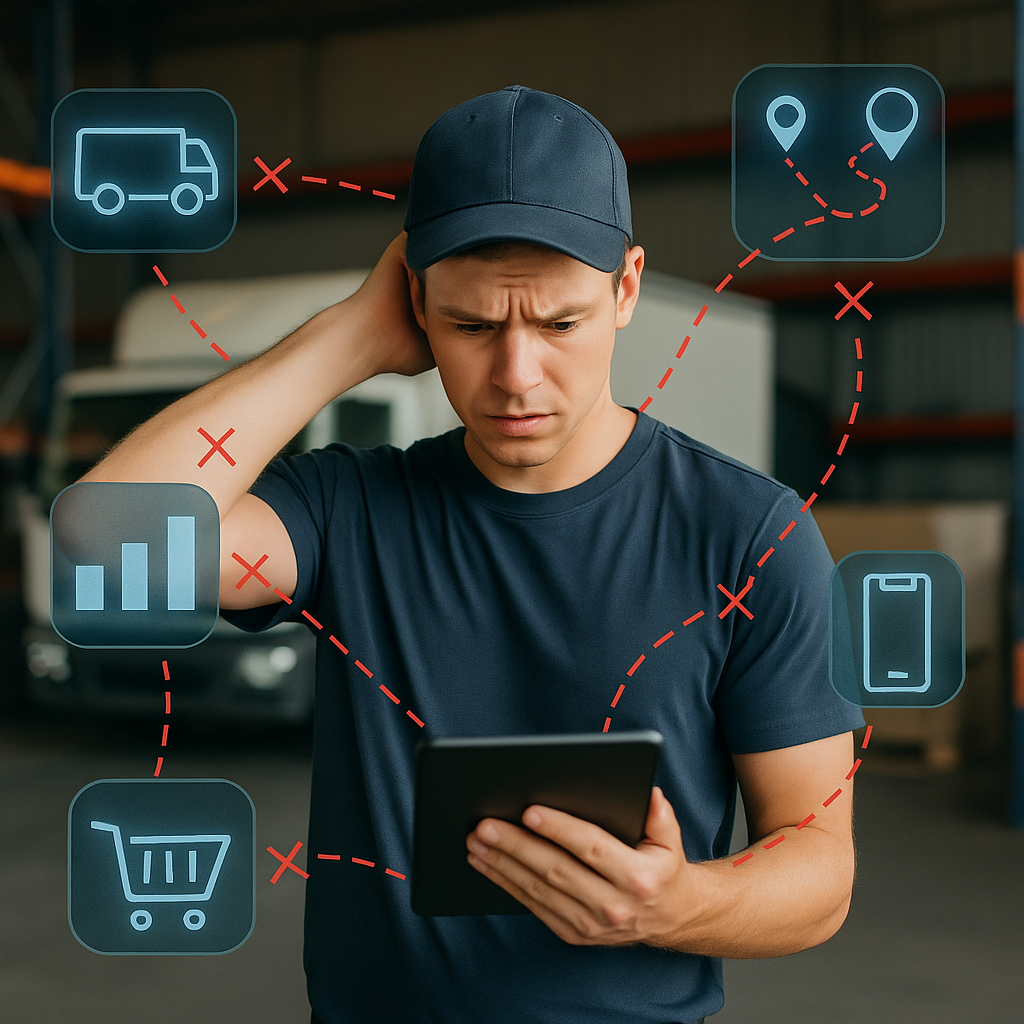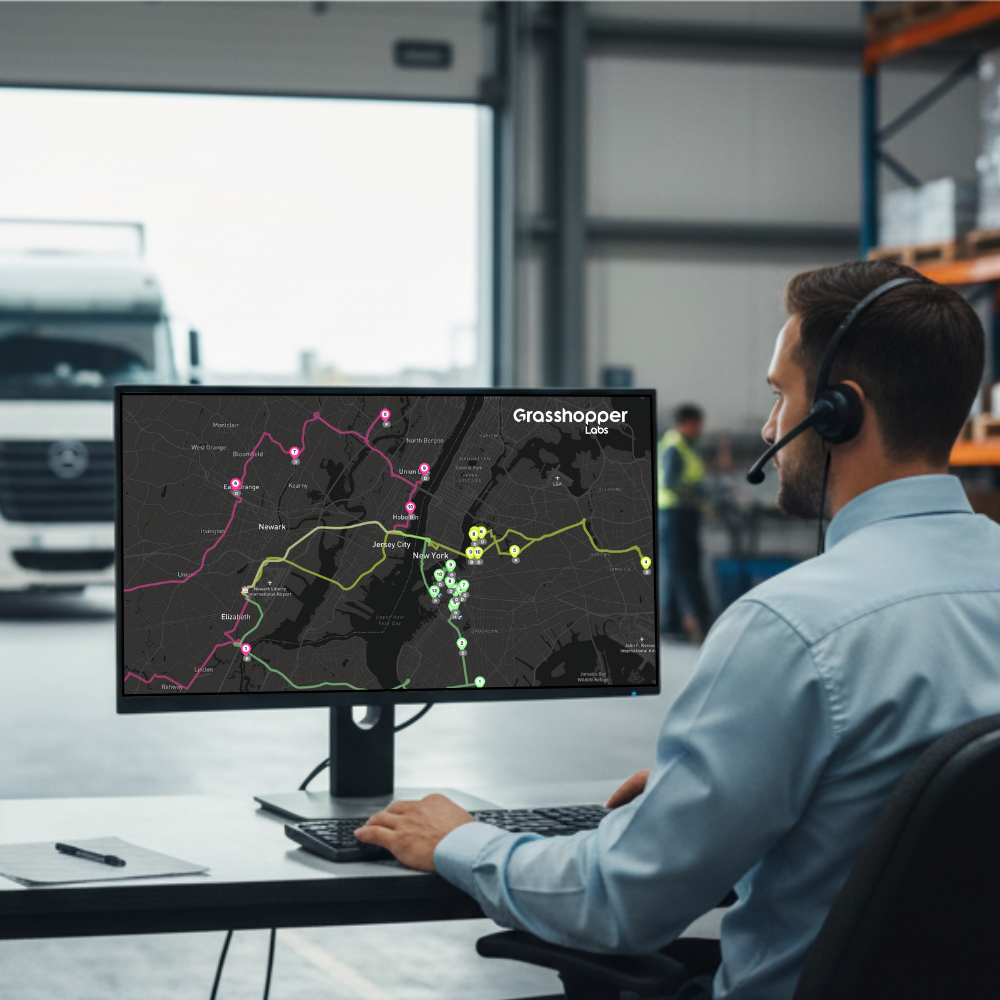5 Signs It's Time to Upgrade Your TMS System
Your transportation management system (TMS) is the backbone of your logistics operation and the engine that keeps routes efficient, deliveries on schedule, and customers informed.
As technology and customer expectations evolve, an outdated system can quickly become a source of inefficiency, causing delays, communication gaps, and frustrated customers who start losing trust in your brand.
If your TMS feels more like a bottleneck than a solution, it may be time to modernize.
Here are five clear signs it’s time to upgrade your transportation management system, and what you’ll gain when you do.
Summary:
- Manual routing wastes time — AI solves it.
- Real-time tracking reduces customer calls.
- Disconnected tools slow teams down.
- Weak communication hurts loyalty.
- Scalable TMS = sustainable growth.

1. You’re Managing Routes Manually Instead of Using AI
If your team is still planning routes by hand, relying on basic mapping tools to decide the best paths, you’re missing out on the speed and precision that AI-powered automation can deliver.
Manual routing might work for a few shipments. But the more stops you add, the longer it takes to plan—often resulting in inefficient routes that send drivers back and forth across territories, wasting time, fuel, and payroll hours. What feels manageable at a small scale quickly turns into a logistical headache as your delivery volume grows.
An AI-powered transportation management system uses AI and machine learning to build optimized routes in seconds. When your TMS system leverages historical data, live traffic patterns, and delivery windows, it creates the most efficient routes automatically and optimizes your revenue on the truck.
AI-driven routing helps:
- Plan complex routes instantly.
- Adapt to changing conditions in real time.
- Reduce mileage, fuel, and payroll costs.
- Improve on-time delivery rates.
With AI handling the heavy lifting, dispatchers gain back time, drivers stay on schedule, and customers get the reliable delivery experience they expect.
Each completed route makes the system smarter by learning patterns that improve efficiency, speed, and service over time.

The impact is immediate:
- Faster deliveries
- Lower operational costs
- Increased customer satisfaction
Having AI at the core of your routing, your business shifts from reacting to problems to anticipating them—turning your logistics operation into a proactive, data-driven system that runs smarter every day.
2. You Can’t Track Deliveries in Real Time
The biggest downfall to outdated TMS systems is visibility. If you’re relying on phone calls, emails, or manual status updates to find out where your shipments are, you’re already behind.
Modern transportation management systems give you real-time visibility into every order, driver, and route. Instead of reacting to problems after they occur, your team can monitor activity as it happens—reducing downtime and improving performance.
With real-time tracking, your TMS can:
Show live delivery progress across every truck and route.
Send automatic status updates at every step in the delivery process.
Adjust ETAs dynamically based on traffic or delivery conditions.
Notify your team and customers instantly when issues arise.
For dispatchers, real-time data means faster problem solving and proactive decision-making. If a driver runs into a delay, the system automatically updates timelines and communicates those changes to everyone who needs to know.
For your customers, it means confidence. When they can track their order live on a branded delivery page, they feel informed and connected to your brand—not left in the dark waiting for updates.
Real-time delivery tracking has become non-negotiable in modern logistics. If your TMS doesn’t provide live visibility, you’re not just losing operational efficiency—you’re falling behind in customer experience.
3. Your Team Relies on Multiple Disconnected Tools
When routing tools, reporting dashboards, and legacy platforms don’t talk to each other, your transportation management solution stops being a solution—it becomes a bottleneck.
Disconnected systems make it difficult to share data, track performance, or see the full picture of your logistics operation. Every time data is entered manually, you increase the risk of delays, duplication, and costly mistakes.
Upgrading to an all-in-one transportation management system centralizes your operations in one connected platform.

With a unified TMS, teams can:
Manage routing, dispatching, tracking, billing, and reporting from one place.
Access shared, real-time data across teams.
Eliminate manual data entry errors.
Improve collaboration between operations, accounting, and customer service.
That integration extends beyond transportation. Modern TMS platforms now connect directly with your warehouse management system (WMS), and order management tools—creating end-to-end visibility across your supply chain.
The results:
Invoicing becomes faster and more accurate.
Warehouses know when trucks are arriving.
Customer service can instantly access live order updates.
A unified TMS and WMS system eliminates chaos by connecting the dots across your supply chain, improving accuracy, accountability, and collaboration.
4. Your TMS Doesn’t Communicate with Customers
Your transportation management system shouldn’t just manage shipments, it should help manage relationships. If customers constantly call to ask, “Where’s my order?”, your current system isn’t providing the visibility or communication they expect.
A modern TMS system keeps customers informed automatically through:

Instant notifications for key delivery milestones.
Branded tracking pages that reflect your company’s identity.
Automated alerts from pickup to proof of delivery.
When every message feels consistent and on-brand, customers don’t just stay informed, they stay confident in your service. Branded communication reinforces your company’s professionalism and keeps your business at the center of the customer experience.
With better communication:
-
Customer service can view real-time delivery status.
-
Support agents access proof of delivery instantly.
-
Teams can resolve issues before they turn into complaints.
In today’s customer-driven market, transparency is no longer optional, it’s expected.
Your TMS should help you do more than deliver products; it should help you deliver clarity, consistency, and confidence with every order.
5. Your System Can’t Scale as Your Business Grows
Your technology should grow with your business, not slow it down.
A cloud-based TMS makes scaling seamless by letting you:
Quickly onboard new shippers.
Easily add drivers or expand delivery regions.
Support higher order volumes without system slowdowns.
Maintain visibility and performance of all locations.
Scalability isn’t just about growth, it’s about flexibility.
The most advanced TMS systems include:
AI-powered route optimization to maximize fleet efficiency.
Built-in shipping calculators to improve cost control.
Integrated WMS tools for complete logistics visibility.

For growing businesses, a scalable TMS ensures:
Efficiency doesn’t drop as demand increases.
Operations stay connected as networks expand.
Customer experience remains strong, no matter how fast you grow.
If your system can’t keep up, it’s not supporting your future. Upgrading to a modern, scalable transportation management solution ensures your logistics operation grows as fast as your business does.
Not Ready to Upgrade Your TMS System?
When you put off upgrading your TMS system, it may feel safer than making a change—but the longer you wait, the more it costs.
Outdated systems lead to:
- Slower processes and manual bottlenecks.
- Rising operational costs.
- Frustrated teams and poor visibility.
While your competitors are using:
- AI-driven route optimization to save time and fuel.
- Real-time delivery tracking to improve customer satisfaction.
- Automation tools that reduce human error and speed up decision-making.
Sticking with legacy systems doesn’t just limit efficiency, it risks your competitive edge.
Choosing the Right Transportation Management System
When selecting a new TMS system, look for features that create real operational impact.
The right TMS system should offer:
- Automated route planning and optimization
- Real-time delivery tracking and visibility
- Integrated WMS, billing, dispatch, and reporting
- Integrations with major platforms
- Branded customer communication tools
With the right transportation management solution, you’re not just upgrading your technology—you’re upgrading the way you serve your customers.

The Future of Transportation Management
The logistics landscape is evolving fast, and technology is at the center of it. Businesses that rely on outdated systems risk losing efficiency, visibility, and customer trust.
Investing in a modern transportation management system is an investment in your business’s future. It enables your team to work smarter, your customers to stay informed, and your company to grow with confidence.
Whether you’re managing regional deliveries or national distribution, the right TMS system will give you the visibility, automations, and scalability needed to stay ahead.


